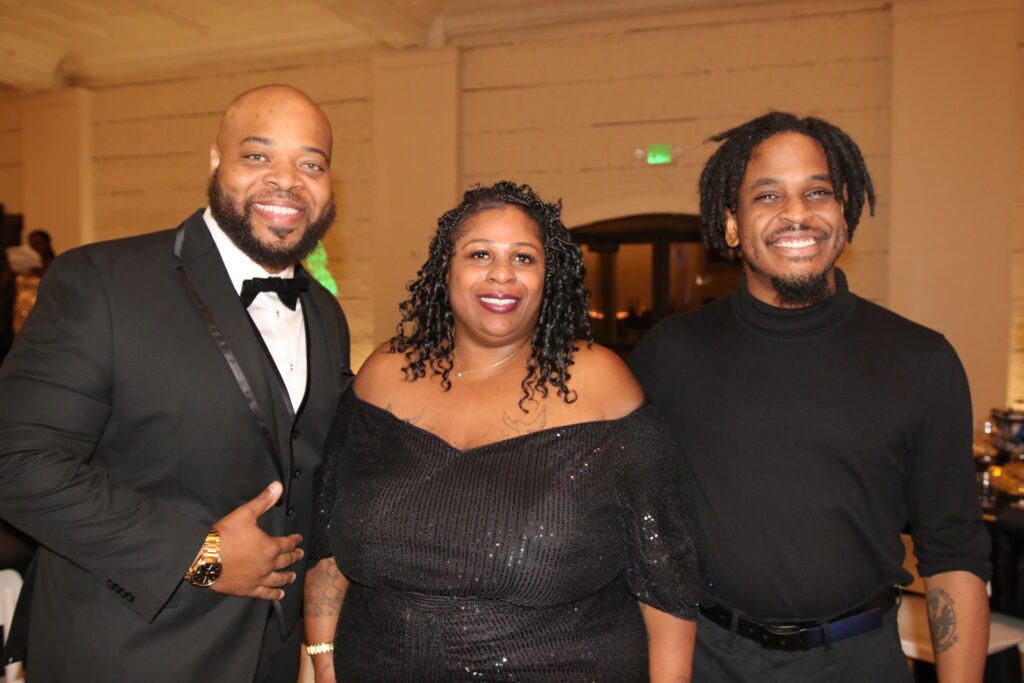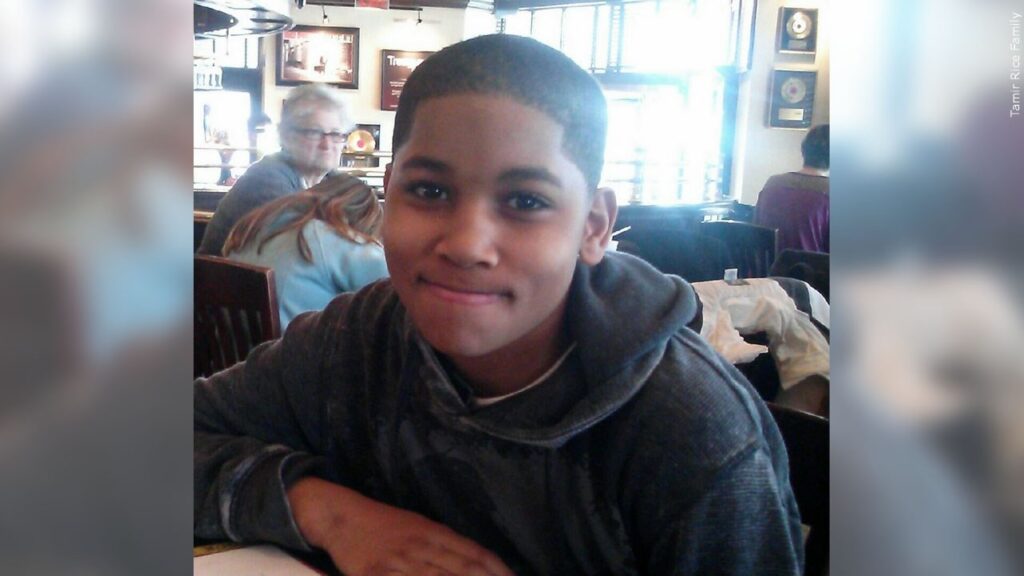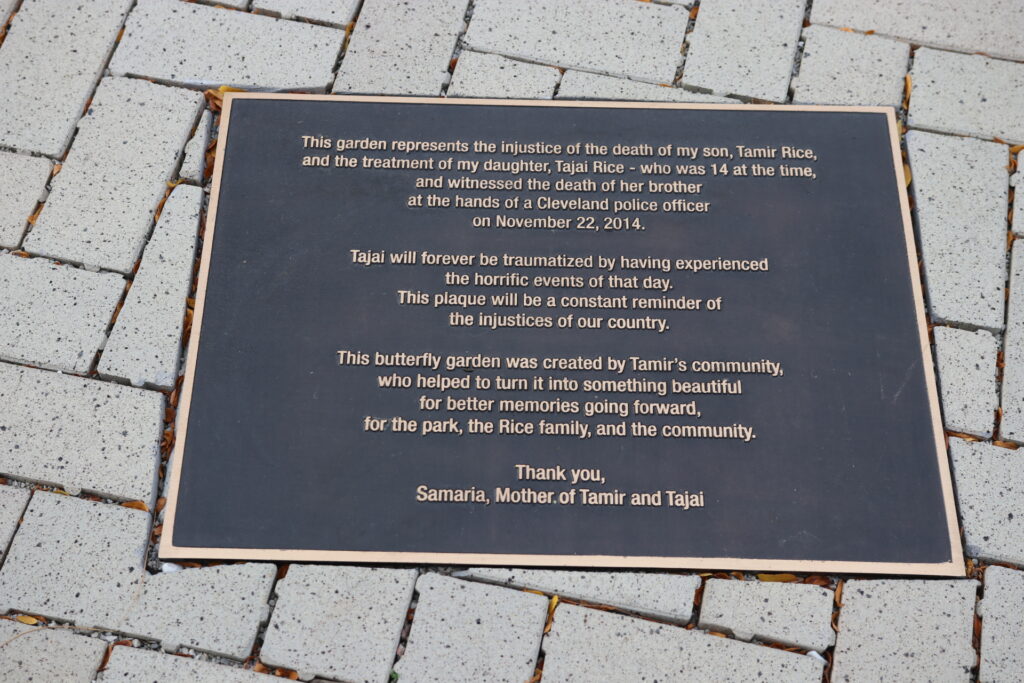CLEVELAND—It has been a decade since the tragic death of young Tamir Rice. On a recent cool, breezy evening at the Gordon Green Event Hall in Cleveland, his family and community gathered to reflect on the life of the 12-year-old Black boy.
Tamir’s mother, Samaria Rice, and the Tamir Rice Foundation hosted the 10-year Anniversary Gala on Nov. 3 to honor his legacy and to garner support for the Tamir Rice Afro-Centric Cultural Center.
Tamir’s death on November 22, 2014, became the driving force behind his mother’s determination to bring awareness to the injustices Blacks are facing in America. Tamir was fatally shot by Cleveland Police while in a park playing with a pellet gun.
He was shot within seconds of the officers pulling up in a squad car to the scene. A grand jury decided not to charge Timothy Loehmann, the officer who fired the fatal shots, or his partner Frank Garmback, who are both White.

Tamir’s death happened within four months of the police-involved deaths of Eric Garner in New York City and Mike Brown Jr. in Ferguson, Missouri, both also Black. Those three high-profile cases led to nationwide protests and unrest throughout the U.S. and the world.
In 2016, the city of Cleveland settled a lawsuit over Tamir’s death for $6 million and eventually fired Mr. Loehmann for lying on his police application, reported the Associated Press.
Samaria Rice has committed the last decade still pursuing justice for her son’s death. “We are still fighting for justice 10 years later. I am wanting and searching for an indictment because the statute of murder never expires,” she said.
Ms. Rice hopes to get a new prosecutor to look back into the case and reopen it “on the state level because the federal level is squashed,” she said. “I’ve been up to the Department of Justice talking to Khristen Clarks,” Ms. Rice said, referring to the assistant attorney general of the Justice Department’s Civil Rights Division.
“I’ve been through three (presidential) administrations, and they are not trying to give me justice on the federal level for Tamir Rice. It is still confusing to me why Timothy Loehmann is not in jail,” Ms. Rice told The Final Call.
“I have stopped Timothy Loehmann three times for trying to be in law enforcement. The system is very broken, and I don’t know why Timothy Loehmann keeps resurfacing almost every year. He needs to know that when he tries to get a job in law enforcement, Tamir Rice is attached to his name, and they are going to let me know and he will be stopped,” she added.
Over the years, Mr. Loehmann has continued to seek and be hired for law enforcement jobs.
In July of this year, AP reported he had “resigned from a police force in West Virginia, the third time in six years he left a small department amid backlash shortly after he had been hired.”

Preserving a legacy
Samaria Rice has taken some bold steps to preserve the legacy of her son. One monumental accomplishment was relocating and rebuilding the gazebo from Cudell Park Recreation Center where Tamir was killed.
The city reportedly wanted to tear down the gazebo and Ms. Rice initially wanted to tear down the site of his death but decided to preserve it as a symbol of her loss. In 2016, Ms. Rice sought the help of artist Theaster Gates, a professor in the Department of Visual Arts at the University of Chicago, to help in her quest.
Mr. Gates spearheaded the efforts to carefully disassemble the structure piece by piece and transport it to the South Side of Chicago. It is currently located at the Stony Island Arts Bank, at the former historic site of the Guaranty Bank and Trust Company, established in 1973 by the Most Honorable Elijah Muhammad and the Nation of Islam. The gazebo will be reconstructed and displayed as a tribute soon.
According to a 2019 article in The Guardian, “Gates stepped in after Samaria Rice, Tamir’s mother, reached out to him personally. Over the years, Samaria and Theaster have developed a special bond. Especially as Samaria has worked with numerous black artists to honor her son’s legacy, with the Tamir Rice Afro-Centric Cultural Center currently in development.”
“There were no propagandists on the line with us or a film crew,” Mr. Gates says of him and Ms. Rice transporting the gazebo from Cleveland to his studio space in Chicago, the publication reported.

“For the two years, the gazebo sat in my studio, there was no major art reporters coming to my studio because I didn’t ask anyone. We were just trying to be diligent with the hurt that Samaria experienced when she lost her son,” Mr. Gates told the Guardian in the article, titled, “‘My duty as a Black man:’” the artist preserving gazebo where police killed Tamir Rice.
At the location of Tamir’s death where the gazebo once stood, now houses a beautiful memorial shaped like the wings of a butterfly that covers approximately one-fourth of an acre of land. The memorial is called The Butterfly Garden.
It is a peaceful place where people can go to reflect, talk, pray, and remember the life of Tamir Rice. The garden is bordered by 34 wooden posts and two concrete benches.
Scattered throughout the brick pathway are 12 colorful painted mosaic butterflies that lead toward the 4 by 4 polished black granite plaque with an engraved portrait of Tamir Rice on it and an inscription. The beautiful garden is filled with flowerbeds, trees, and a variety of other vegetation.

A night of reflection and looking ahead
In the fall of 2019, Ms. Rice announced her plans to renovate a building in Cleveland to build The Tamir Rice Afro-Centric Cultural Center. The goal is for the center to provide free after-school programs, arts, culture, educational and civic programs for youth ages 10-19. She also wants it to be a safe placeto celebrate the history and culture of Blacks and people of African descent in Cleveland.
Community members and supporters who gathered at the Nov. 3 gala shared what the last 10 years have meant to them in remembering the life of young Tamir.
Attendees enjoyed a night of live entertainment from recording artist Syleena Johnson, a performance from a spoken word artist, an awards ceremony, a special monologue performance dedicated to Samaria Rice, and a keynote message from a former NFL player. The collective efforts of several long-time Cleveland activists and supporters contributed to making the evening a success.
Cleveland Mayor Justin M. Bibbs, who has been in office for three years, also attended the gala. “I was a first-year law student when Tamir Rice was murdered, and I am to support Ms. Rice in her pursuit to continue to call for police reform and police accountability. It is an honor to be here to continue Tamir Rice’s legacy,” he said.
The Final Call spoke with Pierre Larauza, an artist who traveled from Brussels, Belgium, to attend the event. He designed an art display in Belgium dedicated to Tamir.
“As a White person, I know it is something special to work on this because I am privileged. My wife is Black, and my son is half-Black, and I do want to be close to this fight in my way as an artist. So, I came here physically to meet Samaria Rice,” he said.
“I want to show to my friends and other people who follow my artwork, to let them know as a White person you need to fight with actions, not only words. Saying that I am against racism is OK, it’s good, but it’s much better if you do something,” Mr. Larauza said.

Family photo of Tamir Rice from the fall of 2014. Photo: MGN Online
Christina Johnson, an actress and visual artist performed an emotional monologue at the gala where she depicts Samaria Rice. The first time she performed the monologue was in 2017 in a play titled, “Objectively Reasonable: A community response to the shooting of Tamir Rice,”written by Terrence Spivey.
“Even before I was asked to perform this piece, it was easy for me to accept the role as a mother of a child who was very close to the age of Tamir at the time. It set very heavy on me because this could have been my child,” said Ms. Johnson.
Andrew Hawkins, a former NFL player for the Cleveland Browns and Cincinnati Bengals, shared that in his view, Ms. Rice, “took grief and transformed that into a movement, activism, and created a better future.”
“It is so easy for tragedy to break people and that be the end of the story. But the way Samaria has taken the legacy of Tamir and used it to help shape the future, I think it is inspirational, and it showed incredible strength from her and the organization and the work that they do for little boys and girls that are like Tamir.
Not only is that commendable, but it is something all of us can look at in our situations, and to the resources we have at our disposal to do more,” Mr. Hawkins said, during his keynote message.

Nicole Taylor Morris, a board member of the Tamir Rice Foundation from Oakland, California, encouraged unity and support for communities across the U.S. that may be faced with tragedies like Ms. Rice’s.
“All we have is each other, so it’s deeply important that we take care of each other as the world is what it is. As the world falls apart, as it comes together, all we have is community. …
We can’t stop these tragedies from happening, but we can take care of each other when they do and that’s what matters. Here we are 10 years later, still trying to uplift communities, Ms. Rice, and uplifting each other,” she said.













